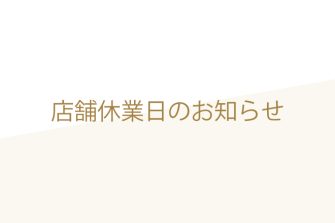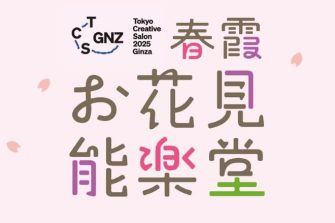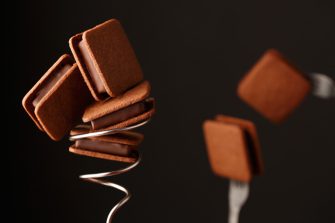
应用古风材料,打造最新颖的贵宾室 The Past as the Way to the Future: A Novel Premium Lounge
PREMIUM LOUNGE「LOUNGE SIX」
新材料研究所(杉本博司、榊田伦之)
GINZA SIX ARCHIVE
杉本博司与榊田伦之联袂组成的“新材料研究所”
榊田:日本虽具有1000年以上文化所孕育出来的材料和工法,但我总是发现当今时代从事建筑工作时,总是从产品样本中挑选比较容易维护、寿命较长的材料,很快就改用现代手法。
在这种背景下,2008年我和现代美术家杉本博司共同成立的“新材料研究所”,其理念便是坚信“应用古风材料正是当今最新颖的方式”,我们虽然用相反的方式强调是新材料研究,但其实是以研究、提倡古风材料为设计理念。但不是单纯营造成古老茶室或寺院般的风格,而是具有现代氛围,所以材料和工法虽然都是古代传承下来的,但是融合方式是以现代风的细节所构成。
我二十多岁时大多在京都建筑师岸和郎的门下,与近代后的建筑形式和建筑师接触很深,我从中学会身为建筑师应有的态度。因此,作为一名建筑师,我认为我的主体风格师承于岸和郎。另一方面,杉本身为艺术家,年轻时也历经过古董美术商的生涯,与他相识之后,我开始将日本文化做为精髓,将其融入设计之中。
杉本与我共同成立新材料研究所之前,本身也会亲自到建筑工地或室内装潢现场去,换句话说,杉本也从事自建工作。新材料研究所和艺术作品一样,其概念非常清楚。但这次GINZA SIX的工作在时间和预算上都有限,身为杉本的工作伙伴,我应该如何理解他的主题和工作方式,並落实于空间呢?在新材料研究所从事设计活动的时候,杉本和我彼此都有明确的分工。
Hiroshi Sugimoto and Tomoyuki Sakakida Join Forces at New Material Research Laboratory
Japan has specific materials and construction techniques that have been cultivated over a millennium, but in this day and age, you can't help but notice that the architectural zeitgeist is shifting towards the contemporary practice of methodically browsing through a catalogue for materials that are as maintenance-free and long-lasting as possible.
Amid this shift, in 2008, artist Hiroshi Sugimoto and I established the New Material Research Laboratory (NMRL) with the philosophy that "The materials of the past provide a breath of fresh air today". So "New Material" is used ironically, as our focus is on researching and imagining novel uses for the materials that were used in ancient and medieval times. But that does not mean our designs are directly based on sukiya-style or the architecture of shrines and temples. We live in a contemporary age, after all, so while our techniques and materials may be from a past age, the design solutions that ultimately result consist of contemporary ideas and details.
I had the privilege of working under the Kyoto-based architect Waro Kishi for most of my twenties, an environment that undoubtedly forged my instincts and my disposition as an architect. Kishi taught me about modern architectural styles, the role of an architect within society, and what an architect ought to be. And then meeting Sugimoto, an artist and someone who has had a distinguished career as a dealer of Japanese antique and folk art, has brought a new dimension to my work and showed me how to incorporate the essence of Japanese culture into what I do.
Sugimoto himself, prior to creating NMRL with me, had already been dabbling in a number of architectural and interior design projects. Like his art work, his designs have a clear concept. With GINZA SIX, however, we were on a timeline and a budget. It was my job as Sugimoto's partner to interpret his themes and approach, and then translate them into interior design. At NMRL, we each have a clearly defined role to play in the projects we take on.
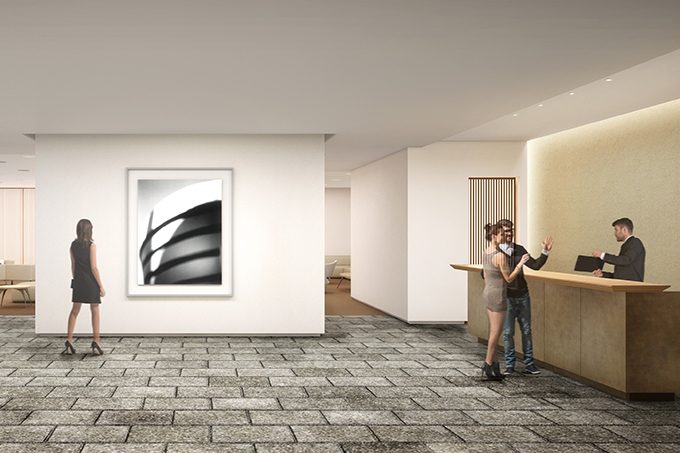
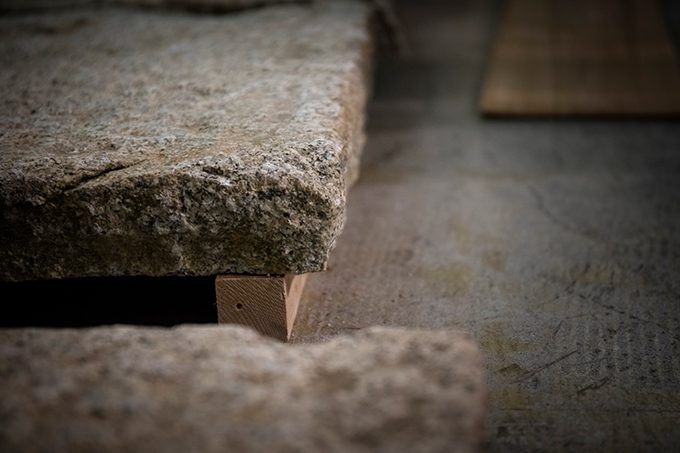
贵宾室“LOUNGE SIX”的重点是“材料”
在GINZA SIX,我们参与的不是建筑设计,而是贵宾室“LOUNGE SIX”的室内装潢设计,在不偏离新材料研究所主题的情况下,我们用“重新编辑日本风格与现代风格”的感觉来解析空间。其中的关键重点无非就在于“材料”。
入口处迎接每位顾客的是宽达10米的黑灰泥外墙。连打底漆的部分都由多名工匠操刀,收尾修饰的部分则由熟练的泥瓦匠一气呵成。黑灰泥根据刮刀的使用方式而呈现出不均匀,形成犹如抽象画一般的风格,这才是能够展现工匠手艺的地方。
从那里开始,在大正时代,贴着招牌建筑等使用的铁板门的招待会楼的地板上,铺上了1912年到78年在京都行驶的市电下的“电石”。说起来就是古董,但是不收集的话数量就不齐,所以“找到的话,总之买!”。”我认为我们与其他建筑事务所在设计上决定性的不同之处就在这里。
顾客们在开放空间较少的地方购物,我希望接待区里面的主厅能呈现开放感,所以我要求有自然光。结果,在大一面的窗户上,配置了作为新素材研究所特征性设计的竖栈门。
另外,“LOUNGE SIX”中还同时设有包厢,分割包厢的边界处采用拉门,在同属于杉木或桧木等针叶树的日本香柏薄板上,用胡麻竹从上方压住做出细节。薄板是将刀子插入木块,顺着木纹劈砍而成的薄片,是一种经常使用在古老茶室天井等地方的材料,因为现在没有人买,所以薄板工匠也几乎绝迹。胡麻竹则使用茶室小门等地方的材料。这些材料原本使用的都是日本规格,我们则是配合现代规格使用。
LOUNGE SIX, Where the Materials Take Center Stage
For GINZA SIX, we designed not the architecture, but the interior of its premium lounge, LOUNGE SIX, which allowed us to explore a central theme of NMRL: "reimagining Japanese-ness for a modern world". It all comes down to the materials, plain and simple.
Guests will be welcomed at the entrance by a ten-meter wide facade with a kuro-shikkui [black shikkui plaster] finish. Everything up to and including the undercoat plaster was done by multiple craftsmen, but the finishing coat had to be applied at once by a master plasterer. With kuro-shikkui, differences in pressure applied with the trowel create a mottled appearance not unlike abstract painting—this display of craftsmanship at the entrance is the first highlight.
From there, guests enter through a door plated with tin previously used for what they called "signboard architecture" [where traditional wooden townhouses were given a facelift by erecting western-style facades that resembled signboards] and the like during the Taisho Era [1912-1926], and find themselves in the reception area. At their feet is stone flooring comprised of denseki [literally, "tram-stones"] that were originally used to pave the ground beneath the tracks of Kyoto's municipal tram, which operated between 1912 and 1978. These stones are essentially antiques that we had to seek out and buy on the spot in order to put together the number we needed—we have to keep an eye out for this kind of stuff at all times. As I said, our methods and techniques can be unorthodox, but this is what sets us apart from other architectural firms.
Beyond the reception area is the main room, which we designed to let in as much natural light as possible to provide our shopping guests with a sanctuary of sorts, away from the retail floor, which has less natural light in comparison. For the wall-spanning window, we've added one of NMRL's signature designs: a special type of shoji screen with framework composed of vertical bars.
Sliding doors separate LOUNGE SIX from a number of private rooms. We added hegi-ita detailing using thin strips of Japanese arborvitae—an evergreen tree belonging to the conifer family that includes cedar and Japanese cypress—held down with gomadake bamboo. Hegi-ita is made by splitting lumber along the grain using an edged tool, and was traditionally used in the ceilings of tea ceremony rooms and the like, but nowadays there barely exists a market for such a material, and consequently there are only a few craftsmen left who can do this kind of woodworking. Gomadake bamboo is a material that is used mainly for the nijiriguchi [a small, crawl-in entrance to a tea ceremony room]. In both cases we've taken a material used in traditional Japanese proportions and adapted them on a modern scale.


几乎全部采用特别订制设计的家具,追求独特性
在家具方面,几乎都是特别订制的设计。提到豪华休息室,不少人会想到意大利高级家具,座椅深,内有羽绒,坐起来很舒服等,但我们这次重视的是独特性。
主厅摆放的“螺旋体沙发”,其灵感来自于同样由新材料研究所参与室内装潢与家具设计的表参道咖啡馆“茶洒金田中”的“螺旋椅”。在杉本的作品里,有个系列的摄影照片表现出三次函数的明治时期数理模型和机械模型组,“螺旋椅”就是根据绘制该螺旋(螺旋体)的模型设计而成的单扶手座椅。“螺旋体沙发”的大小比“螺旋椅”稍宽,而且正如字面所示,设计成沙发的形式。
此外,还有2015年被拆除的大仓酒店东京本馆大厅的桌子,它也是灵感来源。那里的桌子从上往下俯视时,被摆放成梅花花瓣的形状。将“螺旋体沙发”和圆桌搭配在一起时,我们也刻意摆放出花朵般的形象。此外,配合现代人的座位高度,椅腿设计成细长的型式,沙发部分则带有质感等,适当加入现代的精髓。椅腿材料使用了名为宣德的镀金,这是常用于日式拉门把手等部位的材料。研究所喜欢旧手感的颜色,称之为“古美色镀金”,这也是工匠变少的技能之一。
整体而言,“LOUNGE SIX”的空间设计和机场等的VIP休息室完全不同,希望能带给顾客耳目一新的感觉。
A Unique Arrangement of Custom-Designed Furniture
As for the furniture, we decided to custom design practically all of it. When you picture a luxury lounge, you usually think of luxury Italian furniture, you know, deep-seated sofas with feather-stuffed cushions and so forth. But for GINZA SIX, we wanted to go for a more unique approach.
In the main room are Helicoid Sofas, which are direct cousins of the Helicoid Chairs we designed for the Sahsya Kanetanaka cafe in Omotesando. The Helicoid Chair is a chair with a helix-shaped backrest that takes its inspiration from a series of photographs taken by Sugimoto of "stereometric exemplars", that is, mechanical models and sculptural renderings of mathematical models purchased from the West during the Meiji Era [1868-1912]—specifically, the spiral-shaped "helicoid" sculpture. The Helicoid Sofa is a slightly larger, more inviting lounge chair version of that.
We also took inspiration from the round tables and chairs that graced the main lobby of the regrettably demolished Hotel Okura in Tokyo. When seen from above, the round table and the chairs surrounding it were arranged to resemble a plum blossom in full bloom. Similarly, the round tables and Helicoid Sofas in the GINZA SIX lounge were designed to evoke the image of a flower when arranged together. Of course, we've adjusted the seat heights to accommodate a variety of statures, made the leg area less bulky, made the seat cushions more plush, and gave the overall proportions a modern update. We've applied sentoku plating to the legs—sentoku is a kind of yellow bronze used for fusuma handles [typical fixtures in traditional Japanese-style houses used as sliding doors or room dividers]. At NMRL we affectionately refer to this material and its aged texture as "kobishoku plating" [literally, "beautifully aged color"]. Yet another example of a technique with an ever-dwindling number of master practitioners.
All in all, we've taken a much different approach than your standard airport-style VIP lounge. It is our sincere hope that we have created a novel space for our guests to sit and relax.
(2016年9月采访)
Interview and Text by Yuka Okada / Photographs by Daisuke Akita
银座远望
杉本博司
我父母二战前在银座二丁目经营一家名为银座美容商事的美容用品批发店。二战后虽然搬迁到至御徒町,但是银座是我从下就很熟悉的街道。我时常和母亲到不二家享用西餐,周末则全家人盛装去吃NEWTOKYO的中国菜。从NEWTOKYO的窗边眺望,霓虹灯的灯光照射在茶室桥下的水面,而现在这些风景则被首都高速公路所覆盖,已经没了当时的风情。我以艺术家的身份崭露头角也是在银座。小学四年级时,我创作了一幅从银座松坂屋楼顶眺望服部钟表店的画,当时还在儿童绘画比赛中展出。那张画成功获奖,并被展示在世界巡回展上,就这样一直没回到我的手上。比赛的颁奖典礼在护国寺附近的讲谈社总公司举办,我获得正式的奖状,然而当时的我身处大名庭院风的庭院里,深受感动。当时想着等我长大之后,有一天要建造这样的庭院。年少时曾醉心于模型的我,觉得那座庭院是模仿宏伟大自然的模型。而后我的兴趣转移到同样是将世界模型化的照片上。那座庭院也变身为首都高速公路六号线消失不见。像这样回忆中的每个地段,我再以艺术家的身分与它产生关联,这也是不可思议的因缘,有种往事重现的感觉。
银座的土地风情像个美女。前往那里时,人人都盛装出行。美女不适合浓妆,只需要在素面上刷上一层薄粉。而这正是我对GINZA SIX的定妆方案。“New Luxury”要隐去奢华,炫耀奢华是20世纪以前奢华世界的标准。在日本的传统价值观里,那叫“俗气”。珠光所说的“将名马连接到稻草屋的风情”就是“粹”。在简朴的茶室里使用名器,同样是感性的延伸。只不过重要的是虽然装束简朴,但其实却装修细腻。换句话说,就是有钱人装穷这种美学意识,这种美学意识可能因环境变化而位于考究或令人反感的边界上。就像名人的冒险游戏,时代的新感性时常受到反潮流的冲击。
让银座的土地风情保有美女样貌,这是依循日本传统的美学意识,也是我们所肩负的使命。
Text by Hiroshi Sugimoto
A View over Ginza
Before the war our family home was in Ginza 2-chome where we had a beauty products wholesale business called Ginza Beauty Trading. The business moved to Okachimachi after the war, but I was still very familiar with Ginza from childhood. Now and again my mother took me to Fujiya for Western food, while at the weekend the whole family would get dressed up and go to the New Tokyo for a Chinese meal. The gleaming neon reflections on the water beneath the Sukiyabashi Bridge that I could see from the restaurant's windows are gone now that the canal has been covered over by the Shuto Expressway. It was also in Ginza that I achieved prominence as an artist for the first time. In my fourth year at primary school, I painted a picture looking from the roof of Matsuzakaya department store towards the Hattori watch and jewelry store and entered it into a children's art competition. To my surprise, the picture won a prize, whereupon it was sent off on a world tour—from which it never returned. The prize ceremony was held at the offices of the publisher Kodansha near the Gokokuji Temple. They presented me with a magnificent certificate, but what really impressed me was their formal Japanese garden, which seemed worthy of a feudal lord. "When I grow up, I want to make a garden like this," I thought. As a boy, I loved making models and I saw the garden as a scaled-down model of far larger nature. Later, my interest was to shift to photographs, another "modelized" version of the real world. That garden too has gone, replaced by Route 6 of the Shuto Expressway. By a twist of fate, I find myself once again involved as an artist with a piece of land that is so rich in memory for me. It feels like an atavistic reversion.
As a district, Ginza's character is that of a beautiful woman. Everyone who goes there decks themselves out in their finest clothes. Heavy makeup, however, does not become a true beauty; far better is a light dusting of face powder. GINZA SIX shares this cosmetic philosophy. Concealing luxury is the new luxury. Flaunting it was standard practice worldwide until the end of the twentieth century. According to Japan's traditional values, however, that is mere boorishness. Japanese-style iki, or chic, consists, as Sen no Rikyu said, in "tying a fine horse to a thatched house." Drinking tea from an exquisite bowl in a rustic tea house is an extension of this philosophy. The important thing is to create a pretense of coarse rusticity while deploying the most refined utensils. This esthetic, which is like a rich person trying to pass themselves off as poor, can find itself teetering on a knife-edge between the offensive and the sophisticated. Still, the master practitioners of any art are always drawn to danger and the sensibilities of a new age are invariably exposed to reaction's backlash.
Text by Hiroshi Sugimoto

杉本博司
1948年出生于日本东京。1970年赴美,自1974年起至今居住于纽约。彻底地琢磨理念,确立了8x10英寸大型相机的拍摄手法。精致技术所表现的作品被收藏于全世界的美术馆中。2008年成立新材料研究所。2017年,进行改装的摩雅美术馆(热海)翻修开业和小田原文化财团江之浦气象所竣工。2009年高松宫殿下纪念世界文化奖、2010年紫绶奖章、2013年法国艺术文化勋章奥菲西、2017年文化功劳者等获奖(章)。(照片左)
建筑师
榊田伦之
1976年出生于日本滋贺。2001年京都工艺纤维大学研究所工艺科学研究科博士前期课程毕业后,就职于日本设计株式会社。2003年成立榊田伦之建筑设计事务所。之后的3年间,兼任建筑师岸和郎的东京办公室。2008年与杉本成立建筑设计事务所“新素材研究所”,2013年开始该公司的董事所长杉本博司的合作伙伴架构。现在,榊田伦之建筑设计事务所主任,京都造型艺术大学专职讲师。获得第28届BELCA奖。(照片右)
Hiroshi Sugimoto
Born in Tokyo in 1948. Moved to the United States in 1970. Based in New York since 1974. Established a style based on deeply thought-out concepts photographed with a large-format view camera and 8 x 10 inch black-and-white film. His subtly expressive works feature in the permanent collections of museums worldwide. Founded the New Material Research Laboratory in 2008. Currently responsible for the renovation of the MOA Museum of Art (Atami), and the construction of the Odawara Art Foundation Enoura Observatory, both scheduled for completion in 2017. Has won numerous awards including the Praemium Imperiale (2009), the Medal with Purple Ribbon (2010) and L’Officier des Arts et des Lettres (2013).
Tomoyuki Sakakida
ArchitectBorn in Shiga Prefecture in 1976, Tomoyuki Sakakida studied architecture at Kyoto Institute of Technology and completed his masters at the "Waro Kishi Laboratory" in 2001 before joining Nihon Sekkei, Inc. He established Tomoyuki Sakakida Architect and Associates co.,ltd. in 2003 while also serving as director of architect Waro Kishi’s Tokyo office between 2003-2006, where he headed domestic and international projects for a number of clients including Leica Ginza. In 2008, he established the architectural firm New Material Research Laboratory alongside artist Hiroshi Sugimoto. Currently, he heads Tomoyuki Sakakida Architect and Associates co.,ltd., is partner architect of New Material Research Laboratory, and is a part-time lecturer at Kyoto University of Art and Design.
(2016年9月采访)
Interview and Text by Yuka Okada / Photographs by Daisuke Akita





